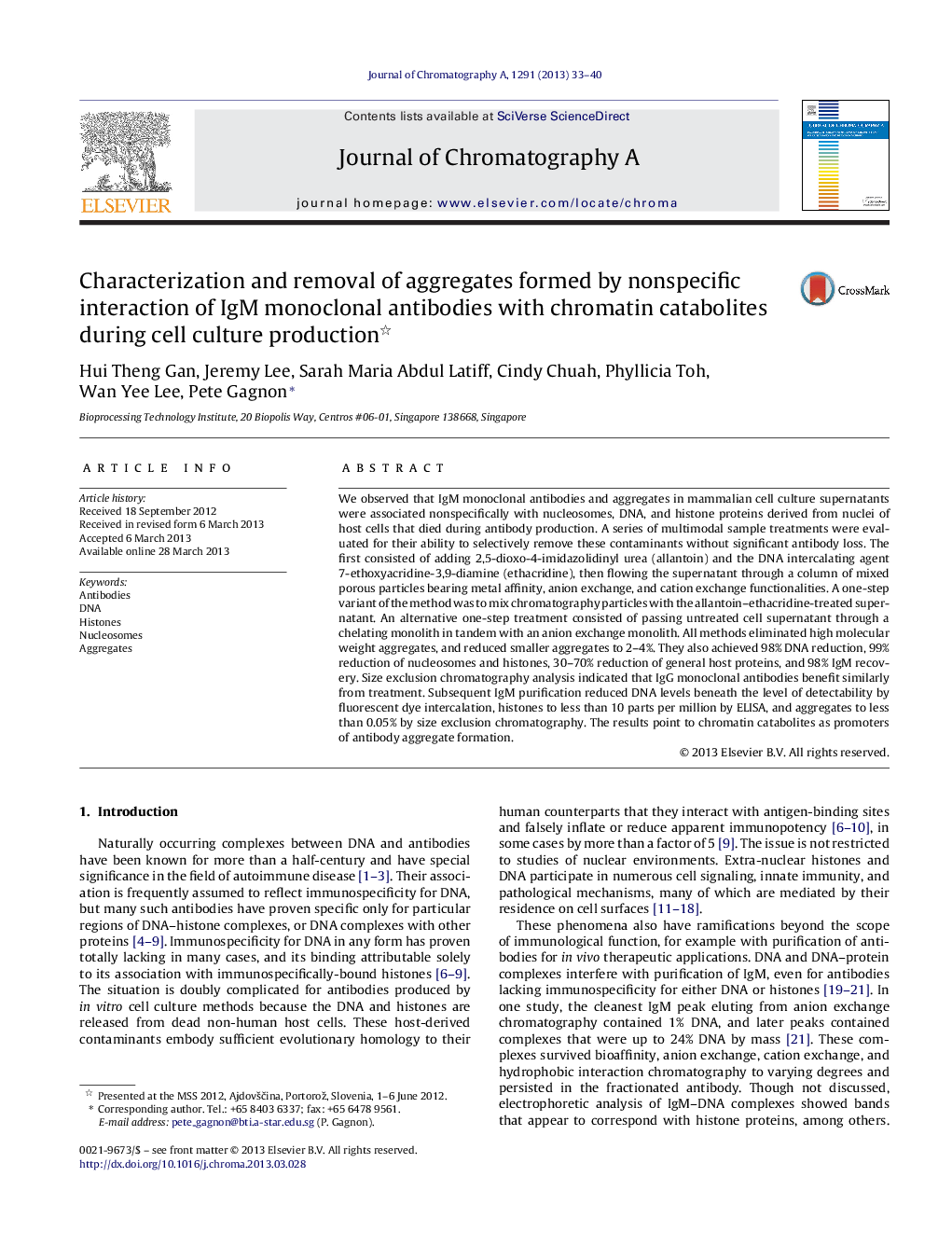| Article ID | Journal | Published Year | Pages | File Type |
|---|---|---|---|---|
| 1201206 | Journal of Chromatography A | 2013 | 8 Pages |
•Chromatin catabolites from dead host cell nuclei form complexes with monoclonal antibodies.•The phenomenon occurs independently from antibody specificity.•Treatments are described to remove chromatin catabolites from cell supernatants.•Treatments reduce aggregates generally, and eliminate high molecular weight aggregates.•Treatments enhance performance of subsequent purification methods
We observed that IgM monoclonal antibodies and aggregates in mammalian cell culture supernatants were associated nonspecifically with nucleosomes, DNA, and histone proteins derived from nuclei of host cells that died during antibody production. A series of multimodal sample treatments were evaluated for their ability to selectively remove these contaminants without significant antibody loss. The first consisted of adding 2,5-dioxo-4-imidazolidinyl urea (allantoin) and the DNA intercalating agent 7-ethoxyacridine-3,9-diamine (ethacridine), then flowing the supernatant through a column of mixed porous particles bearing metal affinity, anion exchange, and cation exchange functionalities. A one-step variant of the method was to mix chromatography particles with the allantoin–ethacridine-treated supernatant. An alternative one-step treatment consisted of passing untreated cell supernatant through a chelating monolith in tandem with an anion exchange monolith. All methods eliminated high molecular weight aggregates, and reduced smaller aggregates to 2–4%. They also achieved 98% DNA reduction, 99% reduction of nucleosomes and histones, 30–70% reduction of general host proteins, and 98% IgM recovery. Size exclusion chromatography analysis indicated that IgG monoclonal antibodies benefit similarly from treatment. Subsequent IgM purification reduced DNA levels beneath the level of detectability by fluorescent dye intercalation, histones to less than 10 parts per million by ELISA, and aggregates to less than 0.05% by size exclusion chromatography. The results point to chromatin catabolites as promoters of antibody aggregate formation.
